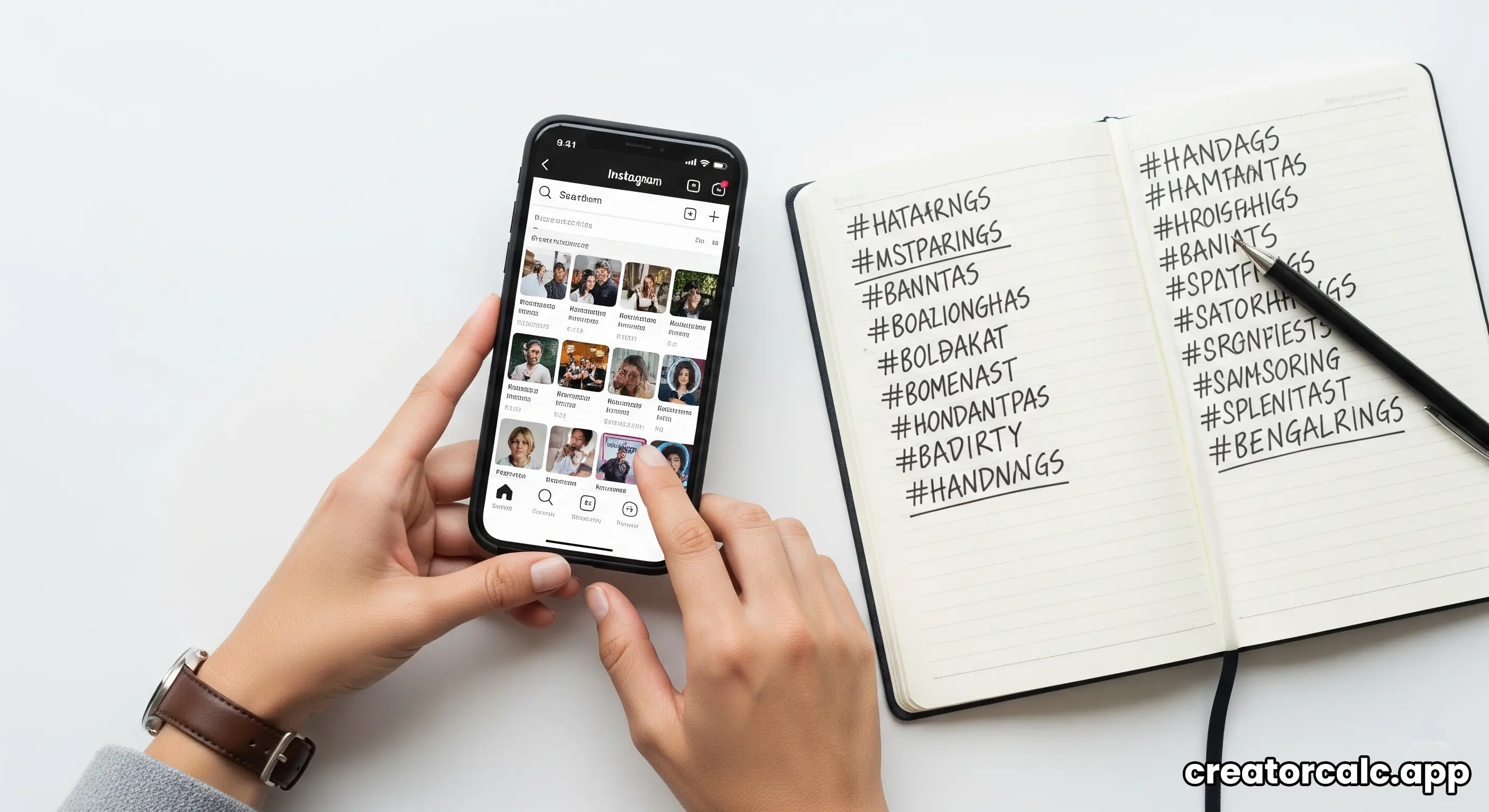Instagram is a powerful platform for creators, but getting your content seen can be a challenge. One of the best free tools at your disposal is the humble hashtag. Using the right **Instagram hashtags** can expose your posts to a larger, more targeted audience, leading to more engagement, followers, and potential customers. But how do you find and use them effectively?
Many people just copy popular tags or use the same ones over and over. This is not a good strategy. In this guide, we'll break down everything you need to know about creating a winning hashtag strategy for 2025. You'll learn how to find the perfect hashtags for your niche and how to use them to grow your account.

Why Hashtags Are Still Important in 2025
Instagram's algorithm is always changing. While keyword SEO in captions is now important, hashtags remain a vital signal to the algorithm. They help Instagram understand what your post is about and show it to users who are interested in that topic. Think of them as categories for your content.
The Different Types of Hashtags
A good strategy uses a mix of different types of hashtags. Don't just use tags with millions of posts. Your content will get lost in seconds. Instead, use a "hashtag ladder" approach:
- Broad Hashtags (1M+ posts): Use 2-3 of these. They describe your general industry. Examples: `#art`, `#photography`, `#smallbusiness`.
- Niche Hashtags (100k - 1M posts): Use 5-7 of these. They are more specific to what you do. Examples: `#watercolorpainting`, `#portaitphotography`, `#etsyshopowner`.
- Community Hashtags (10k - 100k posts): Use 5-7 of these. They connect you with a specific community. Examples: `#womeninbusiness`, `#indiancrafters`, `#artlicensing`.
- Hyper-Niche Hashtags (Under 10k posts): Use 3-5 of these. These are very specific and have low competition, giving you a high chance of ranking in the "Top Posts". Example: `#custompetportraits`.
Advertisement
How to Find the Best Hashtags
Now that you know the types, how do you find them? It requires a bit of research.
- Look at Your Competitors: See what hashtags similar accounts in your niche are using successfully.
- Use the Instagram Search Bar: Type in a base keyword and look at the related tags that Instagram suggests.
- Analyze Your Audience: What other accounts and hashtags do your followers use? This can give you great ideas.
- Use a Tool: For an instant list of ideas, you can use our AI Hashtag Generator. It helps you find a balanced mix of popular and niche tags.

Where to Place Your Hashtags: Caption vs. First Comment
This is a long-running debate. Should you put your hashtags in the caption or in the first comment? The answer is: **it does not matter for reach.** Instagram has confirmed that hashtags work equally well in both places. It is purely an aesthetic choice.
- In the Caption: This is easier and ensures your hashtags are posted instantly with your content.
- In the First Comment: This keeps your caption looking clean and less "spammy".
Choose the method that you prefer the look of. The performance will be the same.
Frequently Asked Questions (FAQs)
1. How many hashtags should I use?
Instagram allows up to 30 hashtags per post. While some people suggest using less, the general advice from most social media experts is to use all 30 if you can find relevant ones. This gives you 30 chances to be discovered.
2. Should I use the same hashtags on every post?
No. Using the exact same block of 30 hashtags on every post can be seen as spammy by the algorithm. Create 3-4 different sets of relevant hashtags and rotate them between your posts to keep things fresh.
3. What are "banned" hashtags?
Some hashtags have been flagged by Instagram for being associated with inappropriate content. If you use a banned hashtag, your post will be hidden from all hashtag pages. Do a quick search for a hashtag before you use it to make sure it's active and clean.
4. How do I know if my hashtags are working?
If you have an Instagram Business or Creator account, you can view your post insights. Click "View Insights" below your post, and it will show you how many impressions (views) you received from hashtags. This is the best way to track your performance.